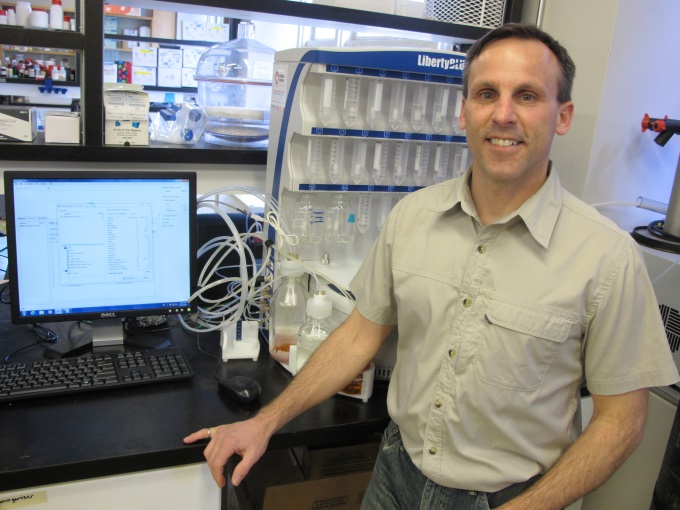A cure for chronic pain
May 20, 2015
Share
Brian Amsden (Chemical Engineering) has received a $1.6 million Collaborative Research and Training Experience Program (CREATE) grant from the Natural Science and Engineering Research Council of Canada (NSERC) for his research into soft tissue repair and regeneration.
Dr. Amsden and his research collaborators are focusing on regenerative treatments of chronic diseases that limit mobility by using stem cells combined with polymers to regenerate ligaments, cartilage and the nucleus pulposus region (inner core) of the intervertebral discs in the spine.

The research approach is unique as it’s a collaborative, multi-disciplinary effort between different faculties and universities.
“Many of us have damaged our spine over the years and the damaged tissue doesn’t heal so the damage just becomes progressively worse,” says Dr. Amsden. “The nucleus pulposus in your spine acts similarly to a gel in your shoes – it cushions impact. As it gets damaged it loses that ability, and arthritis eventually sets in. We are using stem cells obtained from fatty tissue to regenerate the damaged tissue. The polymers will be used to deliver the stem cells and ensure their survival and function while also mimicking the biochemical and mechanical environment of the native tissue.”
A key to this approach, Dr. Amsden explains, is to step in before chronic pain starts. His research is innovative as the team he has assembled is unique, representing four universities and including cell biologists, surgeons, stem cell researchers, biomechanical experts and biomaterials developers. The purpose of a CREATE grant is to encourage multi-disciplinary research.
“No one has assembled a team like this before to develop such regenerative therapies,” says Dr. Amsden. “It’s going to put us ahead of the research curve in this area.”
Included on the team are Queen’s researchers Tim Bryant (Mechanical and Materials Engineering), Davide Bardana (Surgery) and Dan Borschneck (Surgery). Other research partners include Lauren Flynn, Cheryle Seguin, Frank Beier, Elizabeth Gillies, and Alan Getgood (Western University); Craig Simmons and John Semple (University of Toronto), and Walter Herzog and Nigel Shrive (University of Calgary).
For more information on the CREATE grant visit the website.